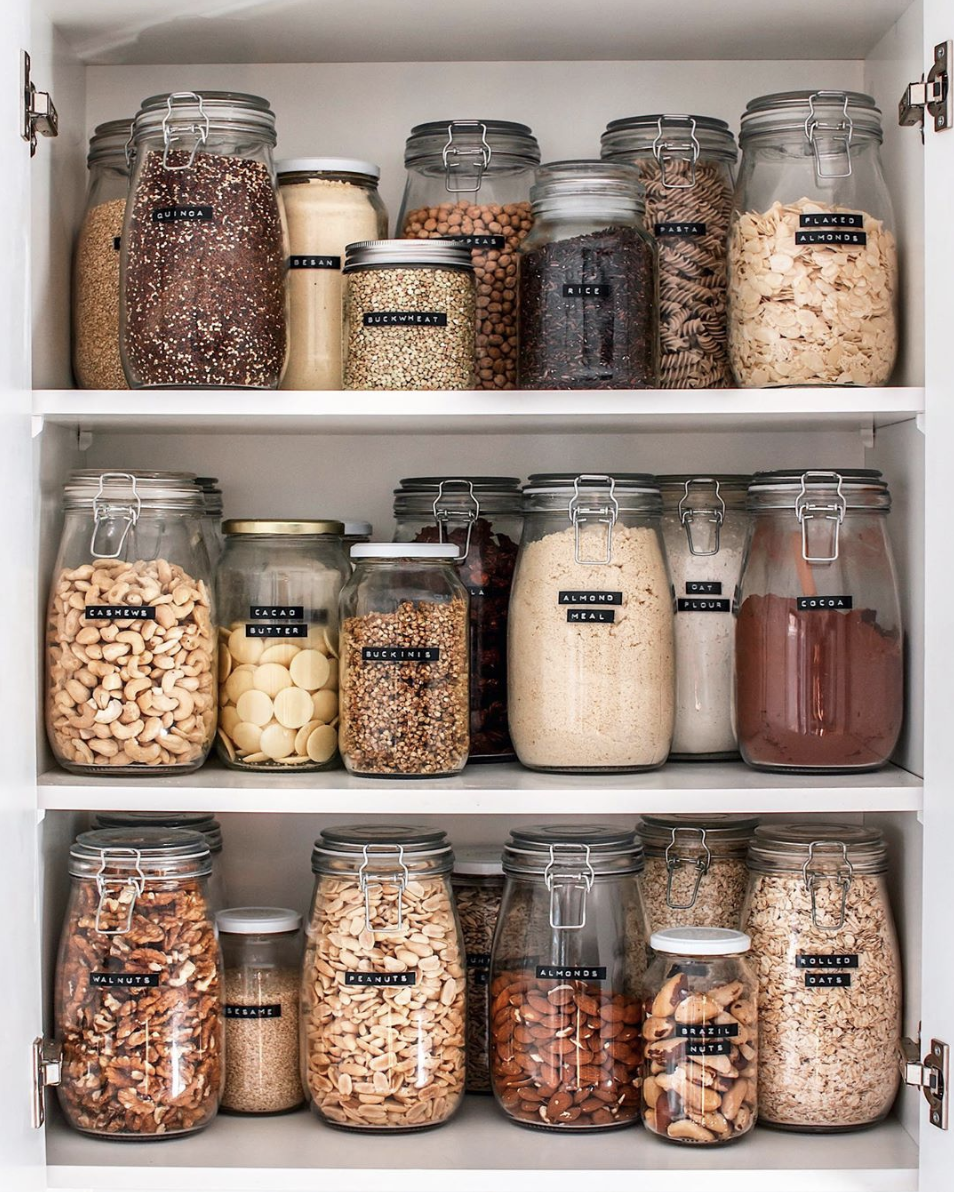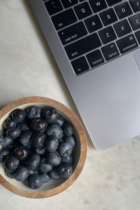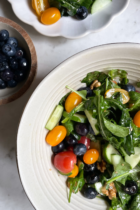
You’ve probably seen “GF” symbols pop up next to menu descriptions at your favorite cafes in recent years. This is because “GF,” which stands for gluten-free, has become the adopted diet of an increasingly large number of people; no longer limited only to those suffering from gluten allergies and celiac disease. But what exactly is gluten, and why is everyone avoiding it?
For those in the dark, gluten is a type of protein found in grains like wheat, barley, and rye. It’s what keeps elasticity intact in food when it ferments, and makes breads chewy and delicious. Most people can tolerate gluten just fine, but for some, gluten can affect their digestive system adversely. While celiac disease is an autoimmune disorder that’s the most severe form of gluten allergy, many others face symptoms of intolerance when consuming gluten-laden products. Common issues are abdominal discomfort, bloating, inflammation, IBS, constipation, headaches, tiredness, and digestive troubles.
Eliminating gluten can provide digestive health benefits, especially if you’re sensitive to the protein. Additionally, cutting down on gluten reduces consumption of packaged food (breads, pastas, cookies), which is a benefit for those looking to eat clean and lose weight. A lot of grains that are GF-approved also have a low glycemic index, which means they’re excellent for women suffering from PCOS.
Thus, if you fit into one of these categories and believe going gluten-free is the right choice for you, we’ve got all the info you need. Even if you can comfortably digest gluten (and there’s no reason for you to eliminate it), we could all do with adding more variety to the grains we consume everyday! These alternative gluten-free grains are whole grains (or seeds) that will give you higher energy levels, promote digestive health, improve cholesterol levels, stimulate healthy weight loss, and reduce the risk of heart disease, diabetes, and some cancers as well.
Check out our guide below to help you select the most delicious gluten-free grains for sides, salads, bowls, and more.
Sorghum
Also known locally as jowar, this grain is grown abundantly across the country, and is well revered in traditional Indian kitchens with incredible benefits. It is rich in protein and fibre, and contains phosphorus and potassium. This superfood is strongly recommended for diabetics and is suitable for people trying to lose weight
How to use it:
- Sorghum flour can be used to replace wheat flour to make breads and rotis.
- Try a twist on a regular breakfast granola by baking boiled sorghum grains with nuts and honey.
- You can also add popped and toasted sorghum grains to recipes for a delicious crunch.
Amaranth
Though amaranth falls in the grain category, it is technically a seed (similar to quinoa or buckwheat). Amaranth is rich in protein: 1 cup of it contains 28.1g of protein as compared to 26.1g in a cup of oats. Amaranth has lesser fat content and cholesterol than protein sourced from animals. The only grain to have Vitamin C, it’s also high in vitamin E, iron, magnesium, phosphorus (excellent for bone health) and potassium; and contains calcium and lysine.
How to use:
- Amaranth can be a sumptuous breakfast alternative to oats, cooked with coconut milk, almond milk or even water.
- Amaranth can replace rice or couscous, and be used in Buddha bowls or served with curries.
- You can sprout amaranth grains to make it easier to digest and use it in salads
Quinoa
One of the world’s trendiest health foods, quinoa is a low GI seed, and one of the only plant based foods that contain sufficient amounts of all nine essential amino acids. With copious amounts of fibre, it is also abundant in magnesium, iron, potassium, calcium, phosphorus, vitamin E, B vitamins and antioxidants.
How to use:
- Quinoa can be used in ways similar to rice or couscous, to make some nutritious and delicious salads, breakfast bowls, lunches and dinners.
- Quinoa flour can also be used to make pasta, bread, or for baked goods like cakes and cookies.
Try this Asian quinoa salad recipe, or make this quick slaw with a side of fluffy quinoa.
Millets
Millets are the hidden gems of Indian food and tradition. They are healthy whole grains that have a low glycemic index, and contain a repository of protein and fiber. They are also naturally gluten-free! In addition to being nutrient packed, millets also require fewer natural resources to harvest (as compared to other grains). When consuming millets, we are not only eating ancient Indian grains that are locally grown and thereby supporting regional cuisine, but we are also promoting sustainable agriculture as millets are good for the soil and buying them supports Indian farmers. There are many regional varieties of millets available, so try them all!
How to use:
- Use it to make a breakfast porridge in place of oatmeal, add millets to baked goods like muffins.
- Use cooked millets in salads and grain bowls, or in place of rice with curries. Ground millets can also be used to make rotis and breads.
Try this modern Indian Millet salad.
Rice
Contrary to the bad rep it receives, rice can actually be a great whole grain if you look beyond regular white rice. White or “polished” rice is actually the most processed of the lot, while brown rice contains way more fibre as it retains the outer bran and germ layers that make it nutrient dense, and give it the distinctive brown colour. Apart from these, you can also incorporate black rice, wild rice, red rice.
How to use:
- Black rice is of Chinese origin, and is extremely high in antioxidants. Make it with curries and stir fries, or even salads.
- Wild rice is actually a grass found growing wild in the wetlands, and is delicious in fragrant rice dishes like pulaos and biryanis.
- Red rice (native to India and parts of South East Asia) is full of fibre and nutrients, and the nutty taste goes well with stews, curries and filling salads.
Try this Mango + Black Rice Salad bowl.
Buckwheat
The “wheat” in its name has confused many who consider it to be a form of wheat, but this superfood is a gluten-free grain packed with protein, fiber, and a variety of antioxidants and other nutrients. This pseudocereal has proven to reduce bad cholesterol levels and maintain heart health. With a low glycemic index, it helps provide the body with a steady flow of energy. An excellent source of digestible plant protein, it is also rich in dietary fiber; which may help you feel fuller longer.
How to use:
- You can cook the grain whole until tender, or you can also grind the raw grains into flour and use it in pancakes, other breakfast foods, or even in your favorite baked goods!
- Crunchy granola, wildberry waffles, and even oatmeal- all these taste equally delicious with buckwheat.
- Opt for buckwheat noodles (soba noodles) instead of wheat noodles.
Our favourite recipes with soba noodles: this salad with miso dressing, or summer favourite: cold soba noodles with mango.
We often find that people eliminate grains from their diet completely for health reasons, or fear them as “carbs” i.e. a potential way to gain weight. However, it’s usually due to a lack of information about all the options available. Grains are an essential part of a balanced meal, and there’s no need to eliminate an entire food group from your diet. Instead of rotating the same 2-3 staples everyday, and try to broaden the diversity on your plates and experiment with a few of these alternative gluten-free grains!
Authored by Bhavna Sharma






